
Birds and Bumpers

Sadie’s first year of training had its downs and ups, but as it drew to an end, we had high hopes for our first retriever. Though she didn’t carry a pedigree of field trial champions, we felt she was on an early course to stake her claim.
As we put the dogs back in the trailer one evening as the sun set, Sadie’s trainer said to me, “Now all she needs is another ten thousand marks.” It was meant to impress on me the need to keep with it. Frankly, it sounded daunting.
I’ll jump ahead to the end of the story: Sadie ultimately earned her AKC Master Hunter title. And though I never counted, I’m betting there were at least 10,000 more training, competition and field marks in her lifetime.

Ten thousand marks could never be accomplished with either exclusively bumpers or birds. It requires a combination used in the right places.
Birds Boost Drive
In the perfect duck dog training world, the only training aid necessary would be birds. However, if there ever was a time a retriever could be trained exclusively on birds — especially wild birds — it’s long gone. Even if it weren’t cost prohibitive, it simply wouldn’t be practical. The acquisition, rearing, feeding, and housing of enough live birds to fully train even a single duck dog is far beyond the reach of any modern duck hunter.
That said, real birds are a crucial tool in training a finished duck dog. Birds build excitement. Starting a pup with live quail, pigeons, partridge and ducks is the way to draw out and capitalize on the dog’s inherent desire to hunt and chase. The feel and taste of feathers is a retriever’s greatest reward.
The best way to introduce a retriever to gunfire is to utilize that excitement. With the right conditioning, gun shots equate with birds in the dog’s brain, which means they are a good thing. Shots mean the reward is about to come.
Later on in training for steadiness, the same excitement creates the opportunity for meaningful correction without physical punishment. When a dog breaks on the desire to get a close-up flyer, the correction is not being allowed to retrieve that bird. It teaches the dog the only way it gets the reward of feathers is to do everything right leading up to feathers. The same correction should be done with bumper marks as the dog learns steadiness, but the greater the perceived reward, the more meaningful the correction. Most dogs will reach a level where they will never break on a bumper, but still might on a live bird. This proves real birds are as important in advanced training as they are in building excitement in puppies.
And, of course, birds provide realism to any training situation. Even if your dog will never set paw in a trial or hunt test, its ultimate purpose is to fetch real ducks that you shoot, so it needs as many real birds as possible in training. And, if you will compete together, there are no bumpers in tests or trials — only real birds.
As a matter of practicality, you will likely need to freeze birds from session to session. That’s OK, but especially for younger dogs be sure to thaw them thoroughly for use. Pups may be put off by diving into birds that are solid blocks of ice rather than the warm, mouthable, feathered delights they were expecting. Use your own judgment as to when a bird is no longer useable, but always err on the side of safety.
Be certain to acquire your birds (alive or dead) from licensed, reputable sources — and make sure to get the proper documentation. If you get them yourself, make sure your collection methods, locations and quantities are lawful.
Bumpers Build Reps
The majority of modern duck dog training will be done with bumpers. Everything from those first backyard, instinctive retrieves through the groundwork of the conditioned retrieve to the 10,000-plus marks it takes to finish a master hunter.
You might think there’s not much to be said about retrieving dummies. However, considering they are the most common and essential training tool, understanding retrieving dummies and knowing what’s available helps training progress faster and makes lessons stick better.
The term “bumpers” comes from the original source of training dummies. They were kapok-filled tubes of heavy duty canvas placed along the gunwales of boats to prevent them from scraping against the dock. As plastics became available, the same bumpers were reformulated as today’s dummies. The use of a maritime aid in training retrievers was only natural, as the earliest dogs that became the Labrador retriever were actually fishing dogs. In Newfoundland (where the breed began), their duties included swimming out to retrieve floats that buoyed fishing nets to begin the haul.
Check out the offerings from SportDog, Avery, D.T. Systems and others, and you’ll quickly see the boat bumper has come a long way! And there has been an increasing focus on mimicking the look, shape, and feel of real birds. Filled canvas dummies are still available and popular with many duck dog trainers, too. A variety of sizes — appropriate to different breeds and growing pups — are available, as are colors, including in a wide range of paint schemes.
The go-to dummies for most professionals are two-inch vinyl bumpers with about a foot of rope attached for ease of throwing. (Tip: When adding rope to bumpers, use a single strand of heavy rope tied at both ends. Take the extra step of melting the ends of the rope so they don’t fray. Loops of lighter rope have an annoying and potentially dangerous habit of snaring claws, paws and legs.)
Pros rely mostly on three colors, depending on the training scenario. White is most visible against a variety of backgrounds. When training a young dog to focus on marks, choose white. White also helps in early training of blind retrieves to instill drive by allowing the dog to spot dummies early on the ground.
You may have heard most dogs don’t see fluorescent orange. That’s not true. Dogs see all colors as various shades of gray including orange. However, most see orange as a shade of gray that blends into the background — especially ground cover. Humans have adept color perception. Orange stands out from the background for us, but dogs see it more like we see — or don’t see — camouflage. The ability to distinguish orange also seems to vary among individual dogs.
The use of orange bumpers is to teach dogs to use their noses to find hidden birds. Though this is best accomplished with fresh dead birds, there are times when they simply aren’t available. The next best thing is adding scent to dummies, which is why canvas bumpers remain popular, as they hold scent better than vinyl.
The third common color used to be black, but it’s hard to find all-black bumpers anymore. They’ve been replaced with half black/half white. Against light backgrounds, these bumpers are even more visible than all-white bumpers, yet offer a bit more camouflage on typical ground. The spinning black/white contrast creates visibility similar to those flashers that timber duck hunters use to catch mallards’ attention through the canopy. In fact, these bumpers are often called “flashers,” too.
The closest thing to “real” without being real are the training dummies modeled after birds. Pro trainer Tom Dokken came up with the original DeadFowl Trainer in 1995. They are meant mostly for duck dog trainers with only one or two dogs, because they are too expensive for pros who buy bumpers by the dozens.
If your goal is realism in training, but without the logistical headaches of real birds, these types of fakes offer a middle ground. An average duck dog owner can afford a few of them and use them for nearly everything. They teach the dog how and where to grip real birds. The flopping wooden heads tend to push the dog’s grip back on the body. Their solid design can be injected with scent to hold it more like the real thing. Paint schemes of various ducks serve the same visibility advantages of flasher bumpers. And they are more durable and hygienic than canvas bumpers, and nearly as durable as vinyl bumpers.
Crucial Combo
In the end, it’s the proper combination of birds and a variety of bumpers that will give you the best training results. Use birds when you can to create excitement and test obedience, and match the proper bumpers to your training goals to add hundreds or even thousands of repetitions. Sadie’s 10,000 marks were a combination of all of the above — and look where it took her!

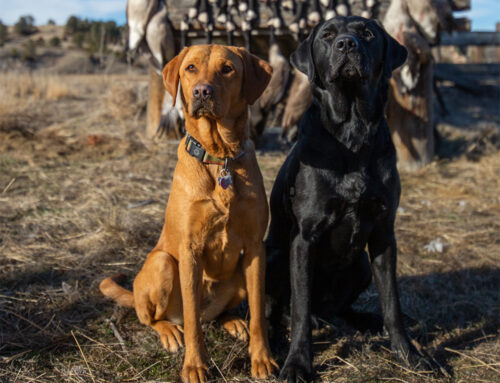
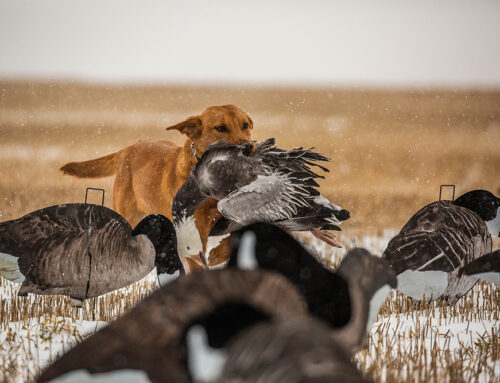
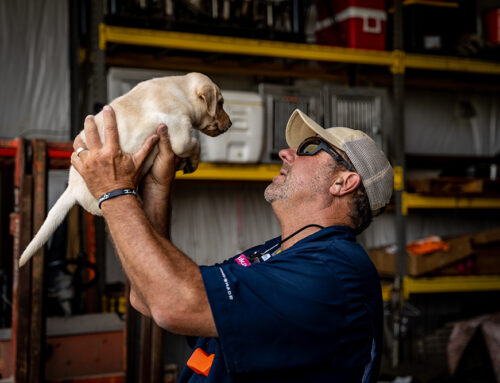
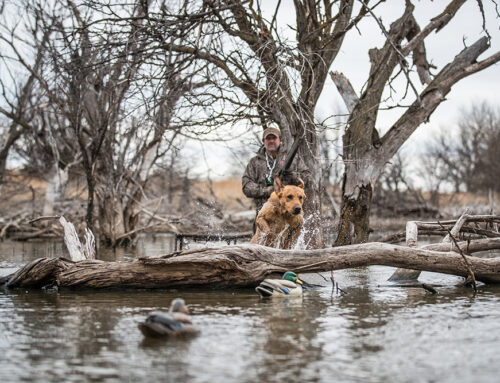
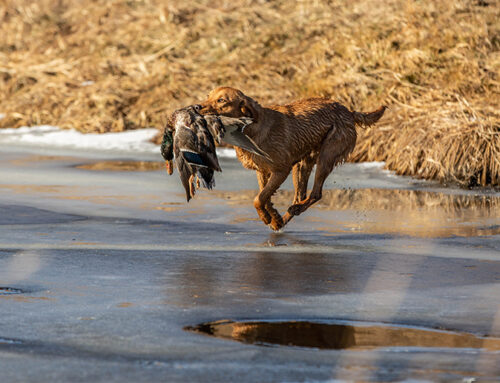
Leave A Comment